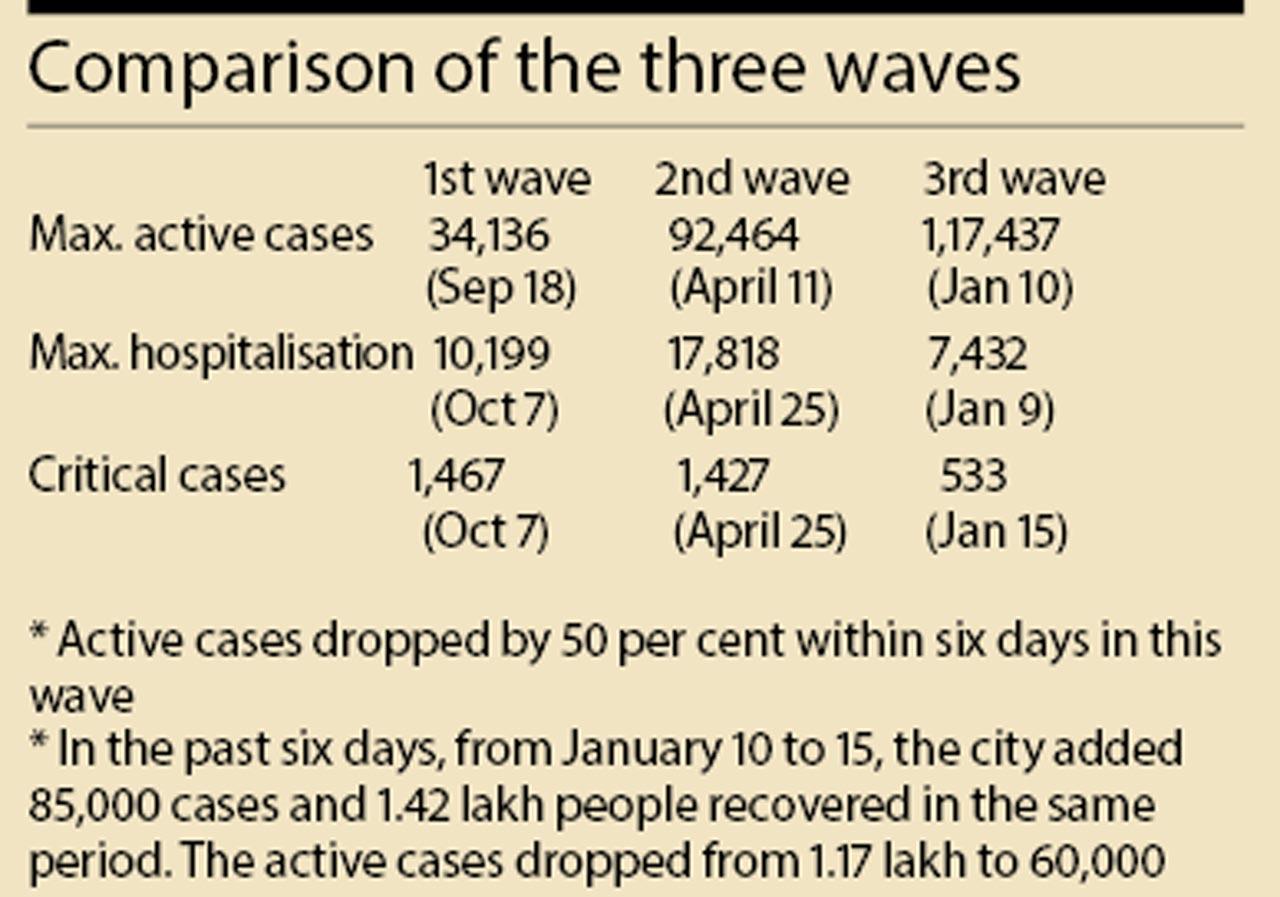Advisor to state government on Covid-19 management warns that it is too early to say third wave infections have reached a peak

At some places in the city, such as here at Bandra Terminus on Sunday, testing is still on. Pic/Shadab Khan
The third COVID-19 pandemic wave has started to decline, according to the Brihanmumbai Municipal Corporation (BMC). The active cases are 25 per cent more than in the second wave during the peak, but the hospitalisation is 60 per cent lower according to their data. However, an expert mid-day spoke to warns that it is too early to declare a peak unless the decline in cases is consistent over a period of time.
ADVERTISEMENT
While the second wave took almost two months to reach the peak, from February 10 to April 4 in 2021, the third wave peak comes within 17 days (from December 21 to January 7).
 A BMC health worker tests a passenger for COVID-19 at Dadar station on Sunday. Pic/Ashish Raje
A BMC health worker tests a passenger for COVID-19 at Dadar station on Sunday. Pic/Ashish Raje
The peak of the third wave was between January 6 and 9 when the daily cases were around 20,000 and the active cases went up to 1.17 lakh. During the first wave, the maximum active cases were 34,138 at the peak, and in the second wave, the active cases reached 92,464 after the peak on April 11 with 11,163 daily cases.
‘TPR hadn’t increased’
“It looks like the third wave started to decline from January 10. The cases peaked on January 7. Even after implementing new guidelines of testing, which suggested testing of only symptomatic patients, the test positivity rate hadn’t increased,” said BMC commissioner Iqbal Singh Chahal.
The active cases currently are 25 per cent more than in the second wave, but still, the city has been spared, as the number of hospitalisations is 60 per cent less. In April last year, when the daily cases were rising, as per the official figures of the BMC, 17,818 beds were occupied in hospitals.
Many patients were on the waiting lists for beds. Compared to that, this time the number of hospitalisations is less even though the cases were more than 20,000 for four days. Now the number of critical patients has increased to 594, but it is still one-third of the second wave.
Expert warns against haste
However, Dr Subhash Salunkhe, epidemiologist and adviser to the Maharashtra government on COVID-19 management, said it is too early to say the city has reached the peak. “In a pandemic, slight fluctuations are always seen. It doesn’t mean that we have reached the peak unless and until the decline is consistent for a span of a week. For Mumbai, it is wait and watch for now,” he said.
Inputs by Somita Pal

 Subscribe today by clicking the link and stay updated with the latest news!" Click here!
Subscribe today by clicking the link and stay updated with the latest news!" Click here!







